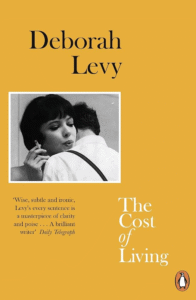The Secret Lives of Everyday Objects: Unmasking the History and Significance of the Mundane
We live in a world of objects, surrounded by items so commonplace we rarely give them a second thought. Buttons, shoelaces, paperclips – these are the silent partners of our daily routines, their utility so ingrained we scarcely register their presence. Yet, beneath their veneer of ordinariness lies a rich tapestry of history, ingenuity, and cultural significance. These seemingly mundane objects possess secret lives, waiting to be unearthed and appreciated.

The Button: From Functional Fastener to Fashion Statement
The button, a humble disc with a hole, has a history stretching back millennia. Initially used more for adornment than fastening, buttons gradually evolved into essential clothing closures. Their rise in popularity coincided with the development of tailored garments, requiring precise and reliable fastening. The material, design, and placement of buttons became markers of social status, wealth, and even political affiliation. Consider the elaborate, jewel-encrusted buttons of royal attire or the standardized buttons of military uniforms, each conveying a specific message. Beyond their practical function, buttons have become collectible items, cherished for their artistry and historical value. From the simple shell button to the intricate enamel creations, the button’s story reflects the evolution of fashion, technology, and social customs.
The Shoelace: A Tying Tale of Innovation
The shoelace, a seemingly simple cord, has a fascinating history intertwined with the development of footwear. Early forms of footwear were often secured with thongs or toggles. The shoelace, as we know it, emerged gradually, its design evolving to provide a more secure and adjustable fit. The invention of the aglet, the plastic or metal tip at the end of a shoelace, was a crucial innovation, preventing fraying and making lacing easier. Beyond their practical role, shoelaces have also become a canvas for self-expression, with different colors, materials, and lacing styles reflecting individual preferences and subcultures. From the utilitarian laces of work boots to the vibrant, patterned laces of sneakers, the shoelace is a subtle yet significant element of personal style.
The Paperclip: A Symbol of Ingenuity and Efficiency
The paperclip, a ubiquitous wire loop, is a testament to the power of simple design. While its exact origins are debated, the paperclip’s function is undeniable: to hold loose sheets of paper together. Its widespread adoption in the late 19th and early 20th centuries revolutionized office work, streamlining filing and organization. The paperclip’s design, though seemingly basic, is remarkably efficient, providing a secure hold without damaging the paper. Its enduring popularity speaks to its practicality and affordability. Beyond its intended purpose, the paperclip has also become a symbol of resourcefulness, used for countless improvised repairs and creative projects. Its simplicity and versatility have cemented its place as an indispensable tool in homes, offices, and beyond.
Unseen Narratives and Enduring Significance
The stories of buttons, shoelaces, and paperclips are just a glimpse into the hidden lives of everyday objects. Each item we use, from the humble safety pin to the ubiquitous zipper, carries a narrative waiting to be discovered. By paying closer attention to these seemingly mundane objects, we gain a deeper appreciation for the ingenuity of their creators, the evolution of their designs, and their enduring impact on our lives. These objects, often overlooked, are silent witnesses to history, reflecting the changing needs, tastes, and technologies of human civilization. Unmasking their stories reveals the profound significance hidden within the ordinary, enriching our understanding of the world around us.




















